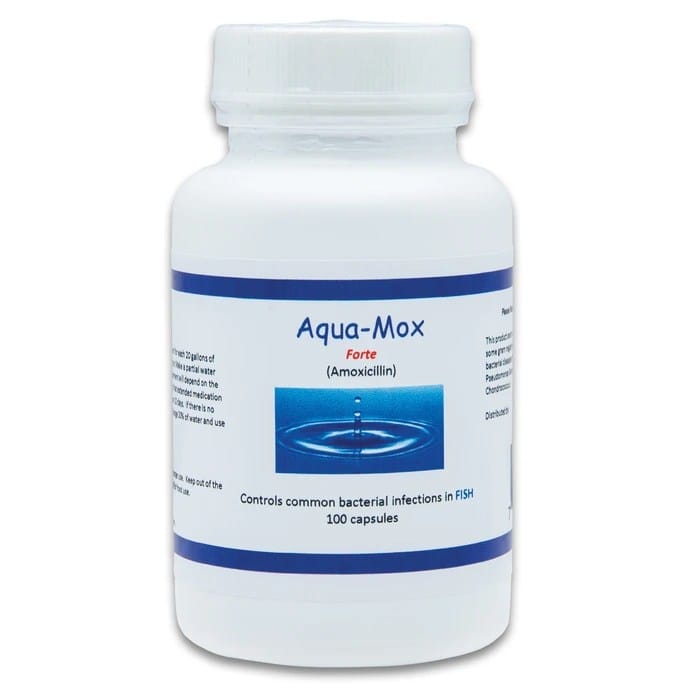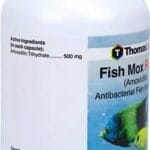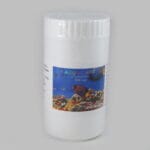Treating a sick fish can be worrisome. If a bacterial infection is the culprit, amoxicillin 500mg may be just what your finned friend needs. This guide provides a comprehensive overview of using amoxicillin 500mg effectively and responsibly in your aquarium.
Understanding Amoxicillin for Fish
Amoxicillin 500mg is a broad-spectrum antibiotic, meaning it’s effective against a wide range of bacteria, both gram-positive and some gram-negative, commonly responsible for fish diseases. It works by disrupting the bacteria’s ability to build cell walls, essentially preventing them from surviving and allowing the infection to clear. This makes it a versatile treatment option for various bacterial infections in both freshwater and marine ornamental fish.
Dosage and Administration: A Step-by-Step Guide
Determining the correct dosage is essential for effective treatment. While general guidelines exist, consulting a veterinarian specializing in aquatic animals is highly recommended. They can diagnose the specific infection and provide tailored advice for your fish’s individual needs.
Here’s a general guideline for administering amoxicillin:
- Remove Activated Carbon: Activated carbon in your filter will absorb the antibiotic, rendering it less effective. Remove any activated carbon from your filter before treatment. You can replace it once the treatment is complete.
- Prepare the Medication: If using capsules, carefully open the capsule and add the contents directly to the aquarium water. Some formulations may come in liquid form, in which case, follow the manufacturer’s instructions for adding it to the tank.
- Distribute Evenly: Gently stir the water to ensure the medication disperses evenly throughout the tank.
- Repeat Dose (if necessary): In many cases, a second dose is required approximately 24 hours after the first. Your veterinarian can advise on the appropriate re-dosing schedule for your fish’s specific condition.
General Dosage Guidelines (Consult a Vet for Confirmation):
| Tank Size (Gallons) | General Amoxicillin Dosage (mg) |
|---|---|
| 10 | 250 |
| 20 | 500 |
| 30 | 750 |
| 40 | 1000 |
Remember, these are just starting points, and factors like the specific infection, fish species, and tank setup can influence the ideal dosage. Consulting a veterinarian is always the best approach.
Recognizing and Treating Common Bacterial Infections
Amoxicillin 500mg is often used to treat a range of bacterial infections in fish, including:
- Pop-eye (Exophthalmia): Characterized by protruding eyes.
- Fin/Tail Rot: Causes the fins and tail to fray and erode.
- Skin Ulcerations: Open sores or lesions on the fish’s skin. fish cephalexin may also be effective for this.
- Columnaris Disease (Cottonmouth): Grayish-white patches, often around the mouth.
- Gill Disease: Affects the fish’s ability to breathe.
Choosing the Right Amoxicillin Product
Several brands offer amoxicillin formulated specifically for fish:
- Fish Mox/Fish Mox Forte: A common choice, with Fish Mox Forte containing 500mg per capsule.
- FishBiotic Amoxicillin: Specifically designed for aquarium use.
- Aqua Mox: Available in various strengths.
Prices, availability, and even reported effectiveness can vary. Researching different brands can help you make an informed decision.
Essential Tips for Safe and Effective Treatment
- Water Changes: Partial water changes before and after treatment can help remove excess medication, waste products, and harmful bacteria. However, always follow your veterinarian’s specific instructions regarding water changes during treatment.
- Observation is Key: Monitor your fish closely for signs of improvement or any adverse reactions. Contact your vet promptly if symptoms persist, worsen, or you notice anything unusual.
- Complete the Course: Even if your fish appear to recover quickly, finish the entire prescribed course of antibiotics to prevent antibiotic resistance.
- Expert Consultation: A veterinarian specializing in aquatic medicine is your best resource for accurate diagnosis and treatment guidance. They can help determine if amoxicillin is the right choice for your fish and advise on the most appropriate dosage and treatment duration.
Prevention: The Best Medicine
Preventing bacterial infections is always preferable to treatment. Maintaining pristine water quality, quarantining new fish before introducing them to your main tank, and providing a balanced diet are crucial for preventing disease outbreaks.
Responsible Antibiotic Use
Overusing antibiotics can contribute to antibiotic resistance, making future infections harder to treat. Always follow your veterinarian’s instructions and never use human-grade amoxicillin for fish, as it may contain harmful additives.
Ongoing Research and Future Perspectives
Current research continues to explore the complexities of antibiotic use in aquaculture. The long-term effects of antibiotics on fish and the aquatic environment are still under investigation, and future findings may provide more nuanced understanding. Some experts believe judicious use of antibiotics is crucial, reserving them for cases where they are truly necessary and exploring alternative treatments whenever possible. This cautious approach may help mitigate the development of antibiotic resistance and preserve the effectiveness of these important medications for both fish and humans.
This guide provides a starting point for understanding the use of amoxicillin 500mg in treating fish bacterial infections. However, it does not replace professional veterinary advice. Always consult with a qualified veterinarian for any concerns about your fish’s health. They can provide the best possible care for your aquatic companion.
- Jesus Bible: Discover Jesus’s Story Throughout Scripture - April 27, 2025
- Don Luis: Unraveling the 16th-Century Virginia Mystery - April 27, 2025
- Captain J’s Kauai Tours: Unforgettable Na Pali Coast Adventures - April 27, 2025
















